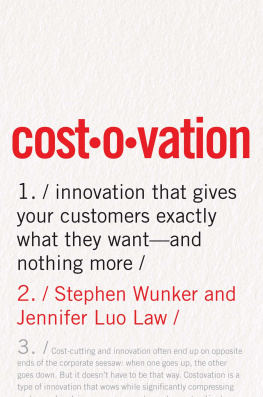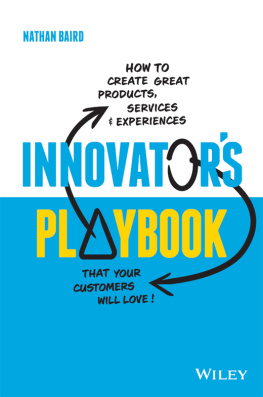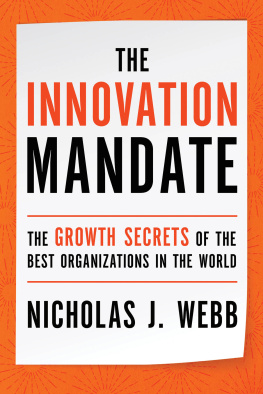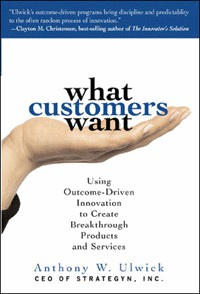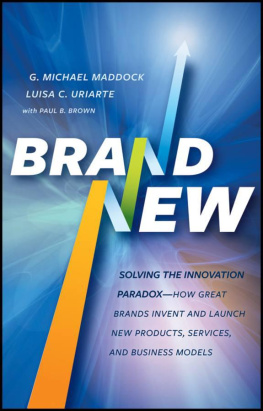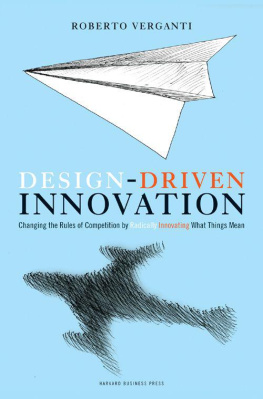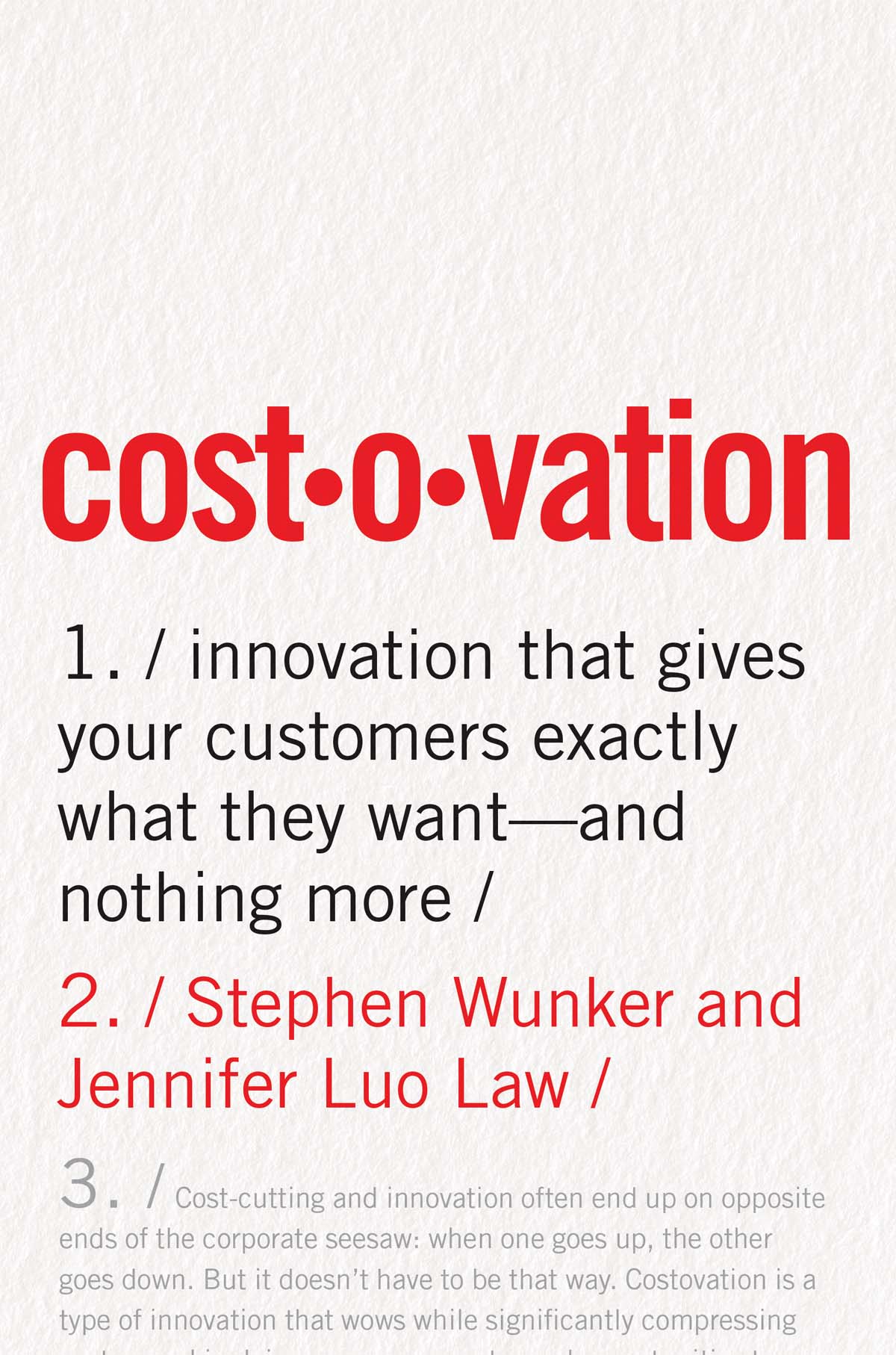contents
Guide
Information about External Hyperlinks in this ebook
Please note that footnotes in this ebook may contain hyperlinks to external websites as part of bibliographic citations. These hyperlinks have not been activated by the publisher, who cannot verify the accuracy of these links beyond the date of publication.
This book was six years in the making, and credit goes to many people for making it happen. We were first introduced to the idea of costovation by Graeme Armstrong, who led R&D and innovation for the Dutch chemicals and coatings giant Akzo Nobel. His quest to see what innovation tools could do for costs led us in unanticipated and intriguing directions. We were also influenced by coaching from other clients along the way, especially Brian Newman, Executive Vice President for Global Operations at PepsiCo.
I worked for six years with Harvard Business School Professor Clayton Christensen, and his thinkingalong with the constant stimulation of my outstanding partners at Christensens consulting firm Innosightshaped my outlook in many ways. In particular, Clay originated the concept of jobs to be done which is foundational to finding costovation opportunities.
My colleagues at New Markets Advisors, both current and past, were essential to this journey as well. Particular thanks go to Greg Ainsworth, Dave Farber, Kara Robinson, and Tess Vorselen. And, of course, Jennifer Luo Law was absolutely core to making this book happen. Kudos go to our editor at HarperCollins Leadership, Timothy Burgard, and our agent at Trident, Don Fehr.
Writing books is not a family-friendly endeavor. The work creeps into nights and weekends meant for other duties. So special thanks for support go to my wife, Jessica, and our three boys Wyatt, Cyrus, and Monty. Jessica also read over several drafts and made innumerable helpful suggestions.
Finally, thanks go to all the audiences Ive tried this material out on as it was still being developed. Theyve helped sharpen our thinking, and I certainly hope they continue to do so.
Stephen Wunker
As a first-time author, I underestimated just how much intellectual, technical, and moral support goes into writing a book. Now that Ive emerged on the other side, I owe great thanks to the many people who cheered me on and gave this project wings.
My colleagues at New Markets, both past and present, were foundational in shaping and challenging the ideas in this book. David Farber in particular was a wonderful sounding board, and his encyclopedic knowledge of case studies meant I never lacked inspiration. Jessica Wattman was invaluable in helping me find my writing voice. And of course, I am deeply grateful to my co-author Stephen Wunker, whose intellect and wit give me so much to aspire to. He has selflessly mentored me over many years, and it has been a privilege writing this book together.
I am always thankful to my parents, Hongfei Lin and John Law, who taught me grit and optimism by example. My brother Canyon Law is my go-to for comedic therapy, and Andy OHara and Kurt MacDonald originally inspired my interest in writing way back in high school. And to my best friend and soulmate, Collin De La Bruere, I owe special thanks. He listened to many rambling book thoughts, offered boundless suggestions, and pretended to be busy on his laptop next to me so that I wouldnt feel bad about spending yet another evening writing. This project has been part of our lives for years, and its success is as much part of my life as it is his.
Jennifer Luo Law
Its Monday Morning. What Do You Do?
STEP 1: Gather lessons learned from past innovation efforts and get into a mindset of innovation.
Learn from the past:
Identify why your past attempts at business-model innovation have failed, succeeded, or never gotten off the ground.
Do the same for your competition.
From these experiences, pinpoint any organizational, sales-channel, strategic, or other barriers that may get in the way in the future. Craft plans to bypass them.
Adopt a mindset of innovation:
Make sure that people relevant to this project have a strong grasp of common innovation behaviors (e.g., uncovering market trends, questioning what they think they know, embracing an attitude of flexibility and adaptability, networking outside their fields to find inspiration and to challenge preconceptions). Ensure that they also have access to innovation tools and reference materials.
Provide cover for those who are bold enough to take on tough innovation challenges. Stipulate that failure will not devastate their careers, so long as they use appropriate innovation behaviors.
Are you ready for the next step?
We understand why innovation has failed or succeeded in the past.
We have crafted a plan for overcoming obstacles that currently stand in the way of innovation.
We understand how we need to behave to be innovative.
The organization is ready to provide support for those who want to innovate. Even those taking on tough challenges still feel secure in their jobs.
STEP 2: Define costovation boundaries and specific strategic initiatives.
Identify your broader innovation goals and boundaries:
Come to consensus on why you are innovating. Ensure that your vision for costovation aligns with your organizations overall strategic goals, appetite for change, and innovation portfolio.
Be clear about how far you are willing to go with innovation. Are you looking to disrupt a product line? A business model? A customer? Are you focusing on the core business or on growth areas, or both? This means being explicit about what is out of bounds for this project (e.g., ideas under a certain projected financial size or time to break even).
Define the broad metrics that you will use to define your success.
Summarize your strategic objectives for this particular innovation initiative:
Make sure that you can succinctly state the overarching strategic goal for this innovation project. This should include details on why you are innovating, what it means to win, and where your innovation boundaries are.
Note your organizations competitive advantagesnot to box you into traditional lines of thinking, but to act as a starting point for ideation.
Assemble a great team:
Select team members for their ability to generate fresh thinking, to find information quickly, and to tell great stories.
Seek diversity in your team whenever possibleparticularly in years of experience in the industry, in thinking style, and in areas of functional expertise.
Set aside protected time for costovation activities.
Are you ready for the next step?
We have developed a clear statement for why we are innovating.
We have defined boundaries for what will be considered, both in the core business and in growth areas, as well as in different functional areas.
We have identified and communicated the criteria by which innovation projects will be judged.
We have selected a team with a wide variety of skills and experiences.
STEP 3: Break out of traditional lines of thinking and choose a costovation focal area.
Identify your industrys assumptions, and practice subverting them:
As individuals or in a group, spend some time exploring what traditional thinking means to your organization and industry.
Examine your industry from afar, as if youre wearing binoculars. What would an industry stranger find surprising or baffling?
Take a microscope to your industry, organization, and offerings, and question features individually.
Next page
